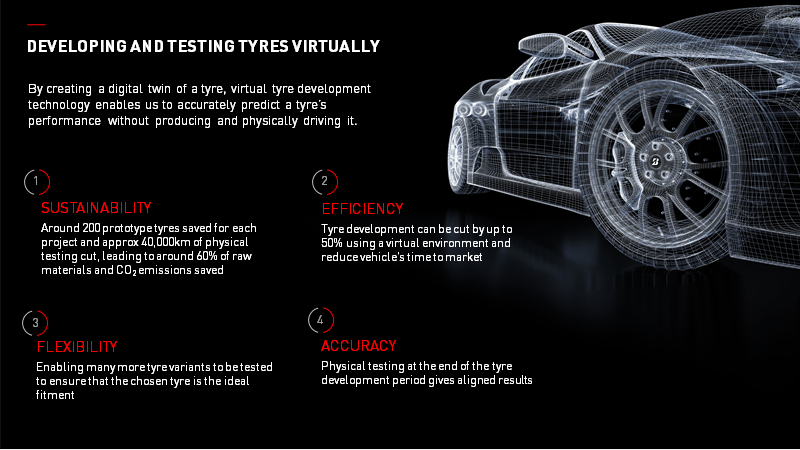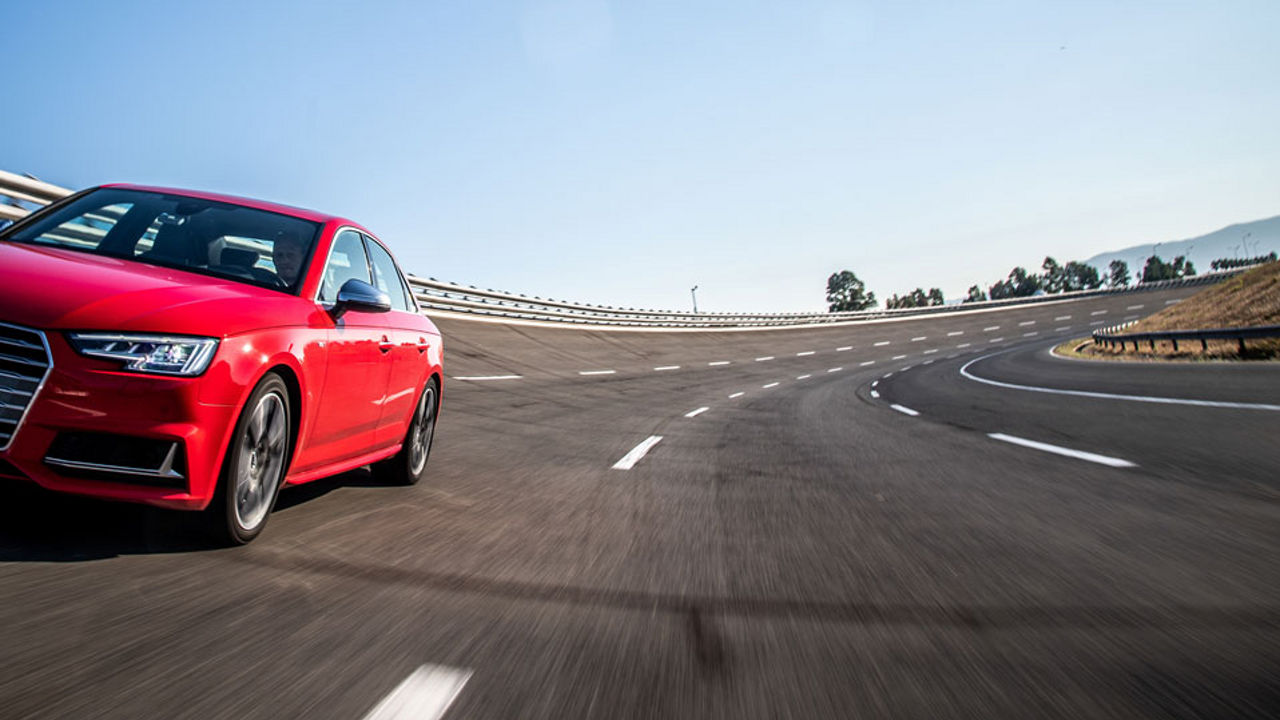Virtual Tyre Development is already helping us to create lighter, more sustainable and more efficient tyres here at Bridgestone, but we’re also using the technology to streamline the tyre development process itself, cutting development time, raw materials use and CO2 emissions along the way.
As a global leader in sustainable mobility and advanced solutions, Bridgestone is committed to delivering sustainable innovation, with tyre development playing a big part. Ground-breaking virtual tyre modelling and simulation technologies are helping us to make this process more efficient and sustainable.
Our proprietary Virtual Tyre Development technology allows us to design a digital tyre, test it virtually and fine-tune it before we manufacture prototypes and move on to physical testing. It’s a process that provides significant benefits in efficiency and sustainability – cutting development time, raw materials use and CO2 emissions – along with offering greater accuracy and flexibility.
Reducing our impact
With Virtual Tyre Development, around 200 tyres are saved in every single project we apply the technology to, thanks to the prototype tyres we’re not manufacturing during development, which results in a saving of around 60 per cent on raw materials and CO2 emissions during the tyre development phase.
The real world is naturally our eventual target for any tyre, so a final check with physical tyres will always be on the agenda, but thanks to Virtual Tyre Development, physical testing can be carried out later in the development process to close the loop and finalise the tyre. Traditionally, the prototype tyres built are physically tested in a process that requires up to 40,000km of track testing. With Virtual Tyre Development, we have a solution that reduces physical testing and related exhaust emissions, making the process more efficient and sustainable.
Through this innovative approach, we’re working to achieve the goals around responsible production set by our CSR strategy, ‘Our Way to Serve’. The success of the technology means we’re now integrating it into all our tyre development processes, and our latest premium tyres, such as the Bridgestone Potenza Sport, have all been brought to market using Virtual Tyre Development.
Reaping the rewards of more flexible development
Bridgestone EMIA began using virtual modelling technologies more than 10 years ago, but only at research level. The use of Virtual Tyre Development technology spread to the Tyre Development Team at Bridgestone in 2015. Our simulation portfolio and modelling capabilities have continuously improved in the years since, reaching a very high level of accuracy today.
Because of virtual tyre modelling technologies, Bridgestone is capable of leveraging a virtual environment for a vast part of the development process, predicting how a range of tyres will perform in different conditions before physically building them.
The increased flexibility of virtual tyre development enables us to test far more variants of a given tyre, thanks to the extreme speed of modifying a tyre’s digital twin and immediately testing it on a driving simulator. Not only does this bring huge environmental benefits, but it can also reduce product development time and outdoor and fleet tyre tests by up to 50 per cent, cutting time to market and costs accordingly.
As a pioneer of virtual modelling for tyres, we have worked closely with car manufacturers over the past few years to share very accurate digital models of our original equipment tyres, along with using the technology to develop our premium replacement tyres.
The end results enable those car manufacturers to use our virtual tyres when developing their own vehicles, on driving simulators, with Virtual Tyre Development providing an accurate and predictable overview of how our tyres will perform. In fact, physical testing conducted at the final stage of development has found there to be aligned results between the virtual and physical tyres.




